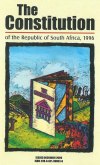The WRRA believes that knowledge is power, which is why we are producing a series of articles about how government works and what our rights are as ratepayers/residents.
COOPErative system of governance
South Africa’s Constitution of 1996 established three levels of government: national, provincial and local. Each sphere has powers, functions and responsibilities that are either its own or shared with another sphere of government.
All spheres need money to exercise their powers and functions, and to carry out their responsibilities.
- National government gives direction (sets policy and legislation).
- Provincial government and municipalities put up infrastructure (the structures that support a society, e.g. roads, railways, water and electrical systems, sewers, telecommunications, and the production of goods and services essential for economic growth and better living conditions) and deliver services (systems that supply a public need such as health care, education, social housing, communications, transport, electricity and water, and law enforcement).
Intergovernmental fiscal relations
National government collects about nine times more money than provinces and municipalities. Yet provinces and municipalities need and spend most of the money. They also have different needs and different levels of economic activity, which means that some provinces and municipalities are able to raise more money than others.
Intergovernmental fiscal relations (IGFR) refer to how the three spheres of government are connected and work together. IGFR also refer to how money is allocated to each sphere so that they can fulfil their individual and collective responsibilities, as laid down in the Constitution and the law.
The relationship is always changing: it changes as functions and responsibilities move between the spheres of government; it changes as the spheres of government work with each other in different ways.
This is why the Constitution lays down a method for sharing the money collected by national government between all spheres of government. This method is known as the budget process, which is a tool that government uses to carry out its policies. It is based on how much money the government expects to receive and how much money national, provincial and local governments need to meet their responsibilities).
The end of the process is in February, with the Minister of Finance’s Budget Speech and the presentation of the Division of Revenue Bill in Parliament, which is Government’s suggestion to Parliament on how the money collected by national government should be shared between the three spheres of government.
